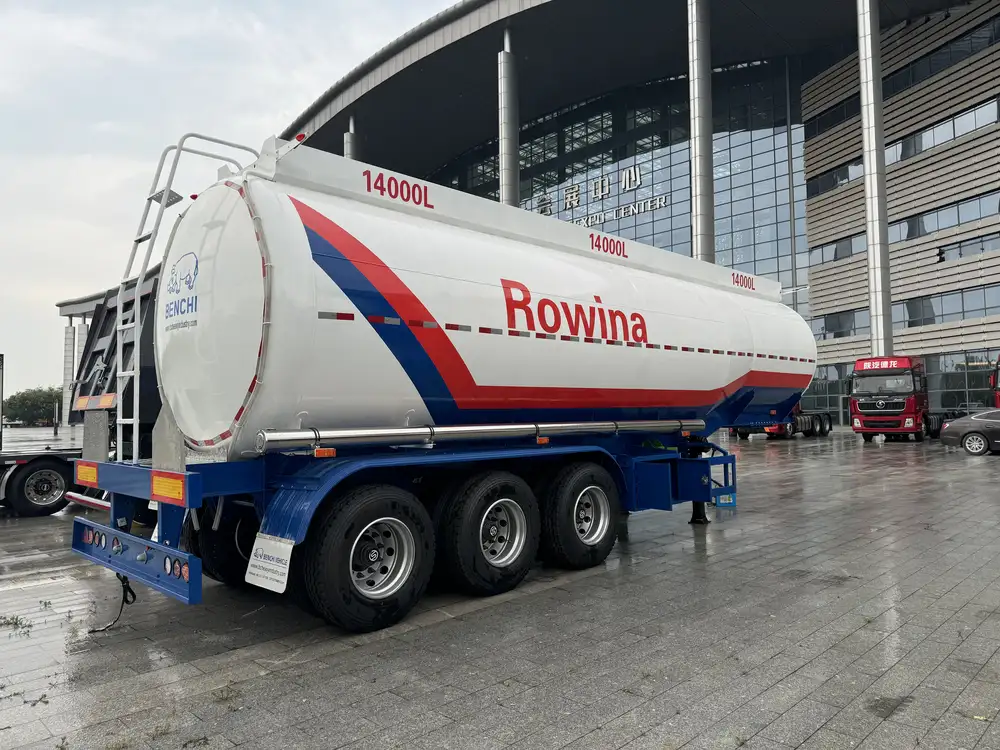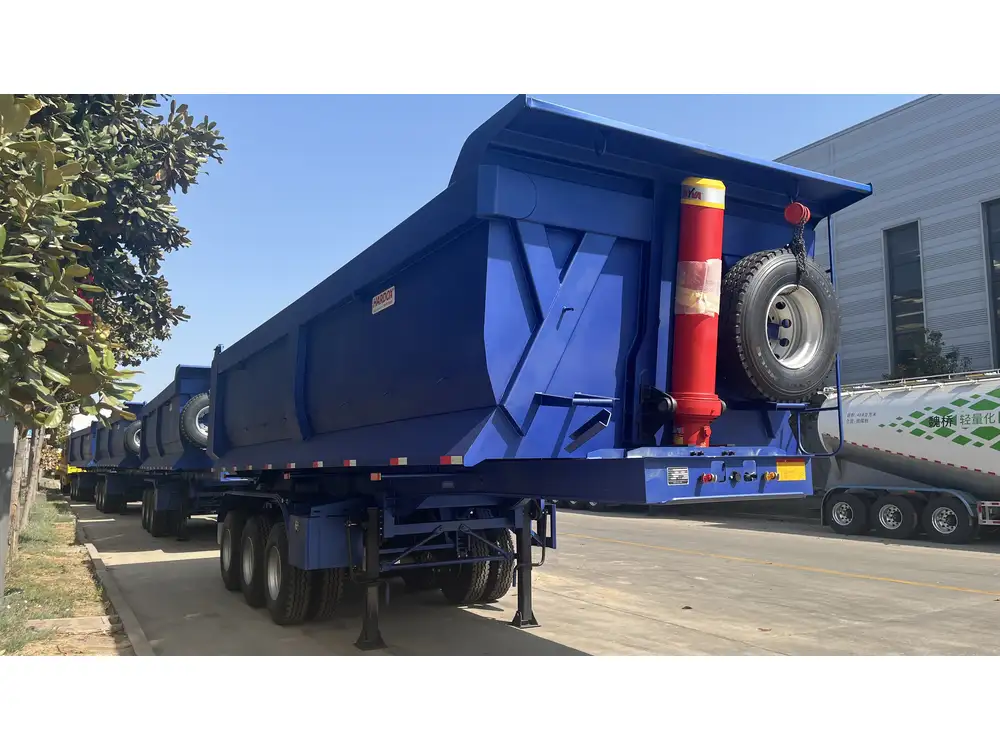In the competitive landscape of trucking and hauling services, profitability hinges on various pivotal factors, among which pricing stands out as one of the most crucial. If you own a truck and dump trailer, the pressing question arises: How much should I charge? This article delves deeply into strategic pricing models, industry standards, cost factors, and competitive analysis that can guide you in setting the most effective pricing strategy for your services, ensuring you attract customers while maximizing profit.
Understanding Cost Structures
Before deciding on pricing, understanding the costs associated with operating a truck and dump trailer is essential. Here’s a breakdown of key cost components:
Fixed Costs
Fixed costs remain constant regardless of the amount of work you complete. These typically include:
- Truck and Trailer Payments: Monthly financing or leasing costs.
- Insurance: Commercial vehicle insurance, liability insurance, and cargo insurance.
- Licenses and Permits: Necessary transportation licenses and permits for your area.

Variable Costs
Variable costs fluctuate based on your operation’s volume and include:
- Fuel Expenses: This can make up a significant portion of operational costs, affected by fluctuating fuel prices.
- Maintenance and Repairs: Regular upkeep is vital for safety and efficiency; budgeting for wear and tear is necessary.
- Driver Wages: If hiring additional drivers, their wages should be factored into job pricing.
Hidden Costs
These costs can often go unnoticed until they impact your bottom line. Hidden costs might include:
- Downtime: Time when vehicles are not operational due to repairs or maintenance.
- Administrative Costs: Time and resources spent on scheduling, invoicing, and bookkeeping.
Conducting Market Research
To set pricing that resonates with the market, conduct thorough research on competitors and industry standards:

Competitor Analysis
- Identify Local Competitors: Identify businesses offering similar services in your area, noting their pricing structures.
- Analyze Service Offerings: Look at what services are offered and their corresponding prices. Are they charging by the hour, by weight, or by job type?
Industry Averages
Consult resources such as industry reports and trade publications to understand average pricing:
- Average Rate per Hour: Rates can vary significantly between locations, industry sectors, and types of materials being hauled.
- Standard Pricing Models: Establish if the common practice in your area leans towards hourly rates, flat fees, or pricing based on tonnage.
Price Setting Strategies
With a wealth of data at your fingertips, the next step is developing a pricing strategy suited to your operational needs and market conditions:

Cost-Plus Pricing
A straightforward method, cost-plus pricing involves calculating the total cost of providing the service and adding a markup for profit. The formula is as follows:
Total Cost + Desired Profit = Selling PriceThis strategy ensures all costs are covered while also guaranteeing a consistent profit margin.
Competitive Pricing
Setting prices based on the prevailing market rate can position your services competitively. Analyze competitors’ pricing to:
- Match Rates: If your services are similar, consider matching or slightly undercutting their prices to attract clients.
- Differentiate with Quality: If your service quality exceeds that of competitors, you can set higher prices justified by superior service delivery.
Penetration Pricing
If you are new to the market, penetration pricing can be effective. This strategy involves temporarily setting lower prices to gain market traction, allowing for:
- Brand Awareness: Attract customers who are willing to give new services a try.
- Customer Loyalty: Once established, incrementally increase your prices while focusing on quality service retention.

Value-Based Pricing
This method requires understanding your customers’ perceived value of your services. If clients view your services as essential or superior, value-based pricing allows you to charge more without losing customers. Factors evaluating perceived value include:
- Reliability and Timeliness: Consistently meeting deadlines boosts client trust.
- Customer Service: Exceptional post-service support can justify higher rates.
Establishing Your Rates Based on Services Rendered
Hourly vs. Per Project Pricing
Deciding between hourly billing and project-based pricing fundamentally impacts profitability.
- Hourly Pricing: Ideal for unpredictable jobs or when completion time is uncertain. This model guarantees compensation for each hour worked.
- Project Pricing: Fixed rates for predetermined tasks are beneficial when project scope is clearly defined, helping clients understand total costs upfront.

Adjusting Prices for Material Types
Certain materials require specialized handling and logistics. Establish different pricing based on the type of material being transported:
- Heavy Materials: Pricing should increase accordingly for heavier loads requiring more fuel and care.
- Hazardous Materials: Extra precautions may be necessary for hazardous materials, justifying higher costs.
Geographical Pricing Variability
Pricing may also need to account for distance and geographical factors:
- Local vs. Long-Distance Hauls: Local jobs generally warrant lower rates than long hauls, due to the additional time and cost incurred.
- Urban vs. Rural: Urban areas may have different demand dynamics and traffic considerations, affecting rate structures.
Crafting an Effective Pricing Strategy
Once you have analyzed your costs, market conditions, and defined service offerings, it’s essential to encapsulate this information into a clear pricing strategy.

Create a Pricing Table
Providing a structured price table is an effective way to present your services, enhancing customer understanding of pricing. Below is a sample pricing table template:
| Service Type | Unit Price | Description |
|---|---|---|
| Hourly Dump Trailer Rental | $XX.XX / hour | Standard hourly rental for a dump trailer |
| Per Project Excavation | $XXX.XX | Flat rate for set project excavation services |
| Hazardous Material Handling | $XX.XX / load | Specialized handling for hazardous materials |
| Long-Distance Haul | $X.XX / mile | Base rate plus variable mileage charge |
Communicating Value to Customers
Always aim to demonstrate clear value in your pricing. Potential customers appreciate transparency:
- Itemized Quotes: Provide detailed breakdowns that showcase costs involved.
- Clear Terms and Conditions: Clearly outline cancellation policies, payment terms, and potential additional fees.
Testing and Adjusting Your Pricing Strategy
Market conditions can fluctuate; thus, continual assessment of your pricing strategy is necessary:
- Customer Feedback: Regularly solicit feedback from customers about pricing and perceived value.
- Monitor Competitors: Stay abreast of changes in competitor pricing and service quality.

Monitoring KPI
Set key performance indicators (KPIs) to gauge the success of your pricing strategy:
- Utilization Rates: Track how often your vehicles are in use.
- Profit Margins: Regularly calculate the profit margins on billed jobs.
- Customer Retention Rates: Measure how many clients return for repeat business.
Conclusion
Determining how much to charge for services involving a truck and dump trailer revolves around a multifaceted analysis of costs, competitive pricing models, market demand, and customer perception. Implementing a robust pricing strategy not only attracts consumers but also ensures your long-term profitability within the industry. Investing time in continuous research, customer feedback, and market analysis will position your business as a leader in providing reliable truck and dump trailer services, ultimately fostering sustained growth and success.



